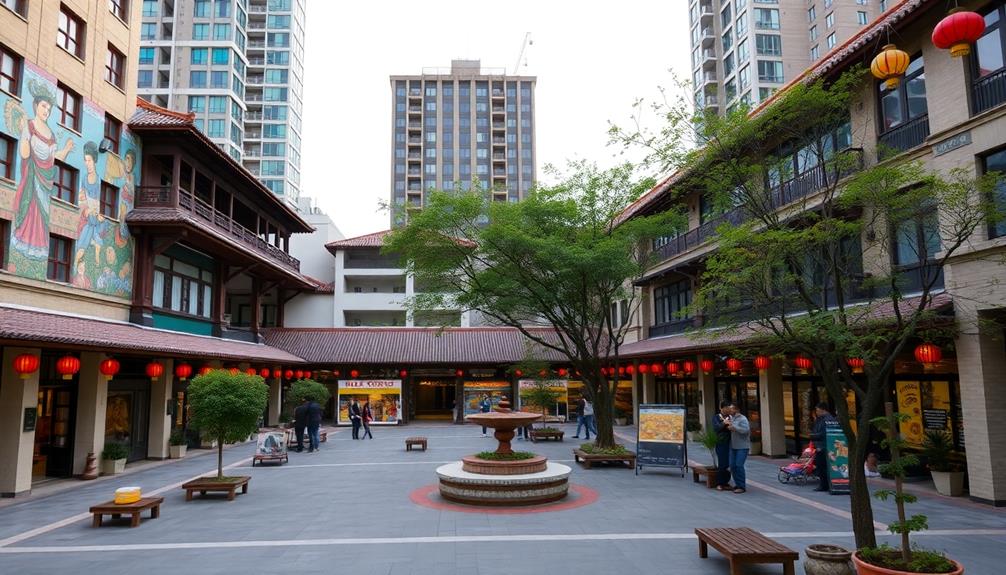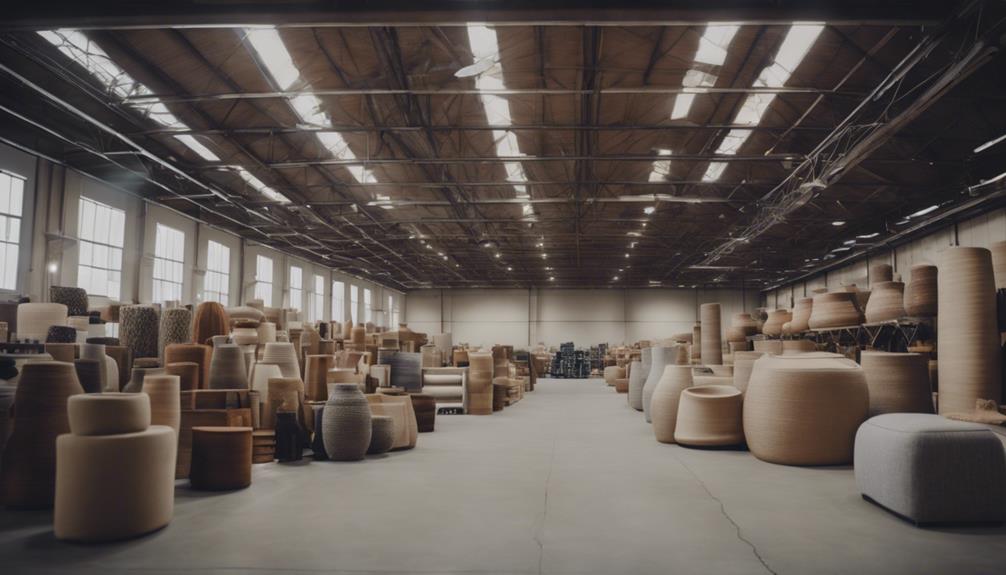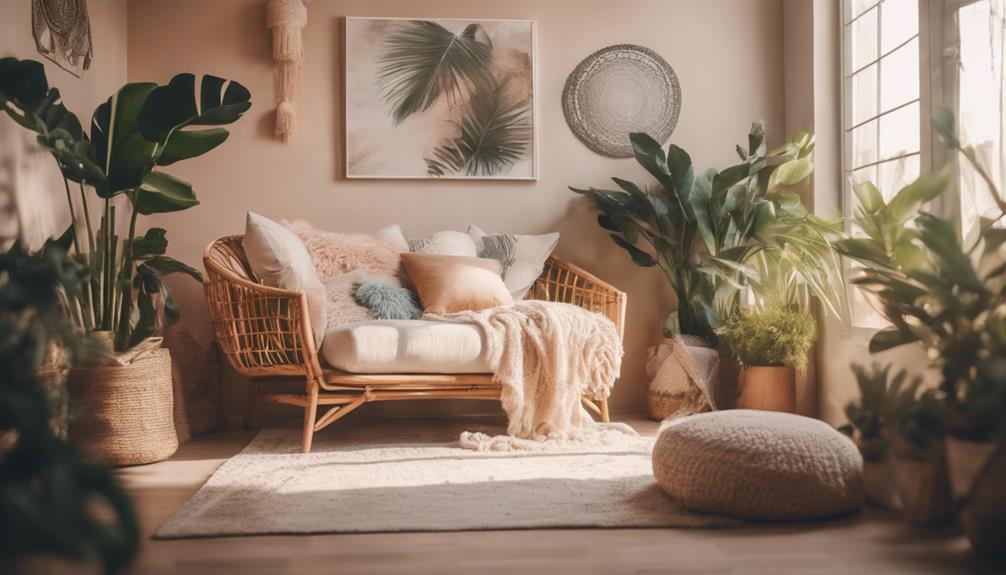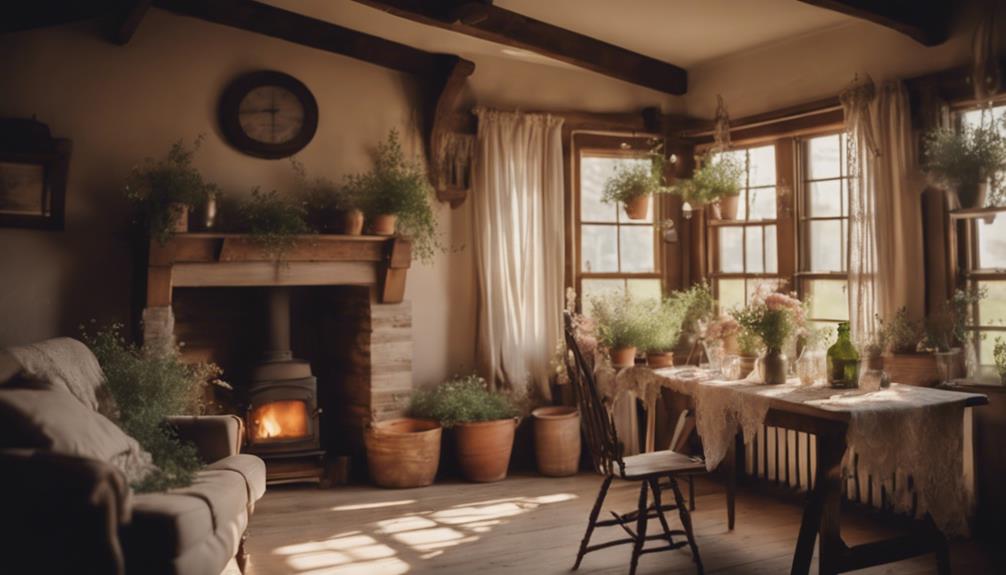Tradition profoundly influences urban design in ways you might not expect. It weaves cultural narratives into the fabric of cities, shaping architectural styles that reflect local identities. Public spaces become vibrant hubs encouraging social interactions and community engagement. Sustainable practices rooted in tradition prioritize harmony with nature and enhance walkability, fostering healthier neighborhoods. Plus, integrating green spaces not only beautifies surroundings but also improves resident well-being. These surprising connections reveal how deeply tradition impacts our urban landscapes. Discover even more hidden influences that contribute to the unique character of cities you live in and visit.
Key Takeaways
- Traditional architecture, like Rumah Adat, influences modern designs by embedding cultural symbolism and reflecting regional identity in urban spaces.
- Public spaces designed with traditional elements promote community cohesion and enhance social interactions among residents.
- Walkable neighborhoods inspired by traditional layouts reduce reliance on cars, fostering sustainable urban environments and improving local air quality.
- Locally sourced materials from traditional practices contribute to environmental harmony and aesthetic appeal in contemporary urban design.
- Green spaces integrated into urban areas, rooted in traditional practices, improve well-being and encourage neighborly connections within communities.
Cultural Narratives in Design
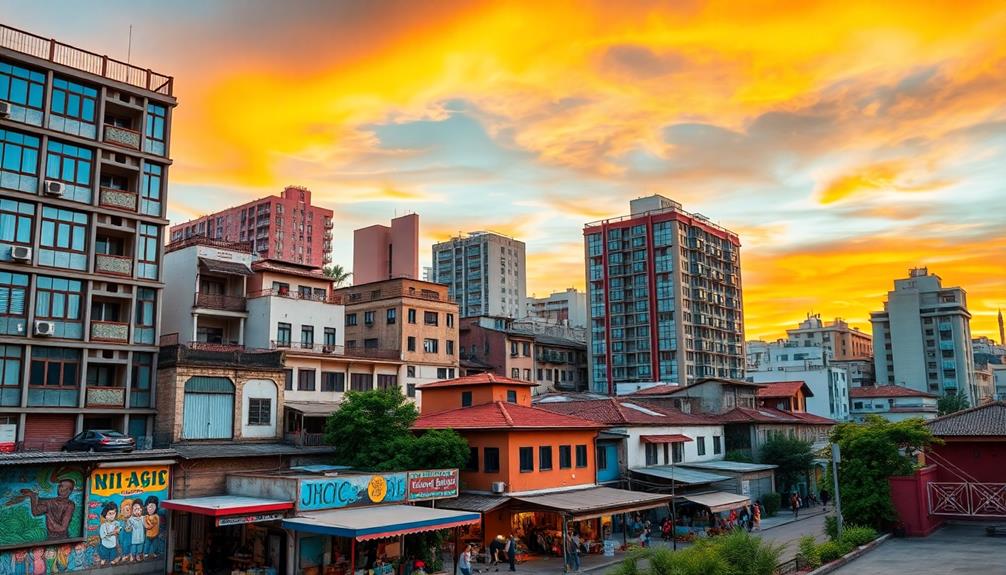
Cultural narratives shape urban design in profound ways, embedding local identity and history into the very fabric of cities. When you walk through neighborhoods with traditional architecture, you're not just observing buildings; you're experiencing the stories and values that have shaped the community over generations.
These narratives foster community cohesion by encouraging social interactions in public spaces, which serve as essential hubs for connection and engagement. Traditional designs, such as those seen in Balinese interior aesthetics, often reflect a deep connection to nature and community, enhancing the experience of urban living.
Traditional urban settlements often prioritize walkability and mixed-use development, making it easier for residents to engage with one another and their surroundings. This design approach reflects historical practices rooted in diverse cultures, promoting a sense of belonging and shared identity.
Preserving architectural heritage is vital for maintaining a city's identity. When neighborhoods retain their historical structures, they celebrate local traditions and provide continuity amid change.
You might notice that modern architecture often incorporates traditional elements, sparking debates about cultural relevance in contemporary urban design. These discussions highlight the importance of integrating cultural narratives into urban planning, ensuring that cities remain vibrant and reflective of their unique histories while adapting to the future.
Architectural Styles and Identity
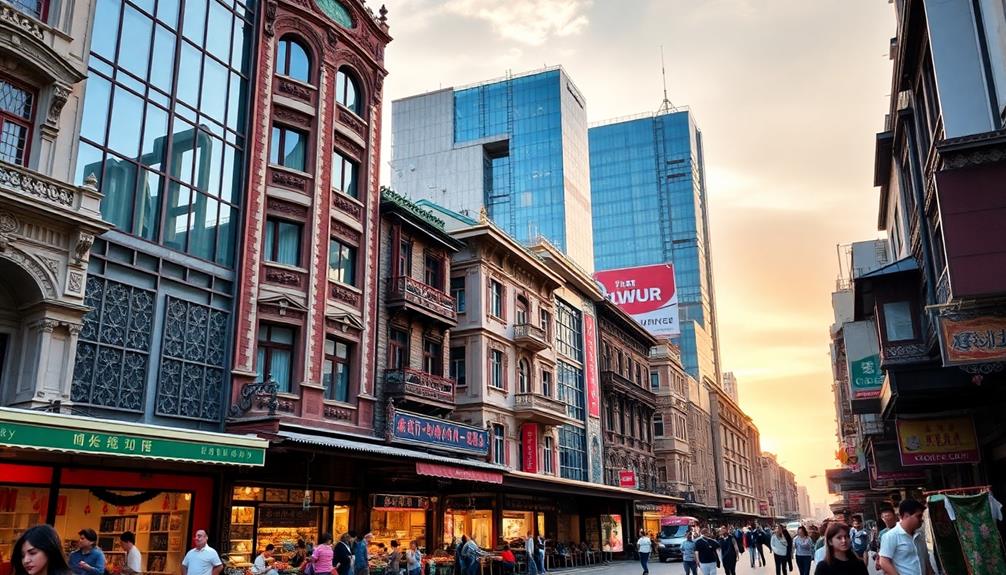
Architectural styles play a key role in shaping a city's identity, reflecting the unique history and values of its communities. Traditional architectural styles, such as the Rumah Adat, often embody cultural symbolism and regional identity, resulting in diverse designs that resonate with local inhabitants.
When you walk through a neighborhood, you'll notice how these styles create a sense of place, offering a glimpse into the past while emphasizing the community's values.
Using locally sourced materials enhances the aesthetic and environmental harmony of buildings, further solidifying a sense of identity. Traditional architecture typically prioritizes human-scale design, fostering walkability and encouraging social interactions among residents.
This human connection is essential in urban design, as it cultivates a vibrant, engaging atmosphere.
As the debate between modern and traditional architecture continues, many people find historical styles more relatable and culturally significant. Integrating traditional elements into contemporary designs not only honors the past but also meets modern needs.
This blend of architectural styles enriches urban environments, creating spaces that resonate with both the history of the community and its current identity.
Ultimately, the harmony between tradition and modernity defines the unique character of a city.
Public Spaces as Community Hubs
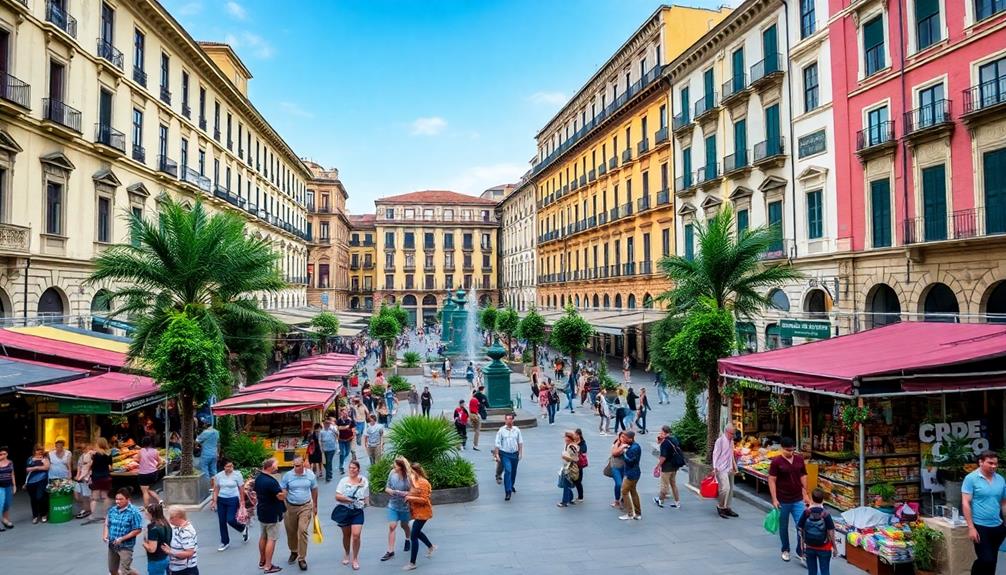
Public spaces serve as essential community hubs, bringing people together and fostering social connections. In traditional urban environments, these spaces are intentionally designed to promote community engagement and create a sense of belonging. For instance, incorporating local craftsmanship, such as intricate wooden carvings, can enhance the aesthetic appeal of these areas while reflecting cultural heritage.
Here are three key features that enhance their role:
- Accessibility: Mixed-use developments surrounding public spaces make it easy for residents to work, shop, and socialize, encouraging vibrant street life.
- Defined Areas: Clear boundaries and distinct forms in traditional public spaces facilitate various activities, promoting face-to-face interactions among residents.
- Green Spaces: Integrating parks and recreational areas not only beautifies the urban landscape but also boosts community well-being, providing spots for relaxation and social gatherings.
Incorporating civic and religious buildings into these spaces reinforces community identity while offering venues for gatherings and celebrations.
The strategic design of traditional public spaces enhances social interactions, allowing you to connect with neighbors and build relationships. By recognizing the importance of these hubs, you can appreciate how they shape your urban environment, creating a thriving community that values engagement and togetherness.
Sustainable Practices From Tradition
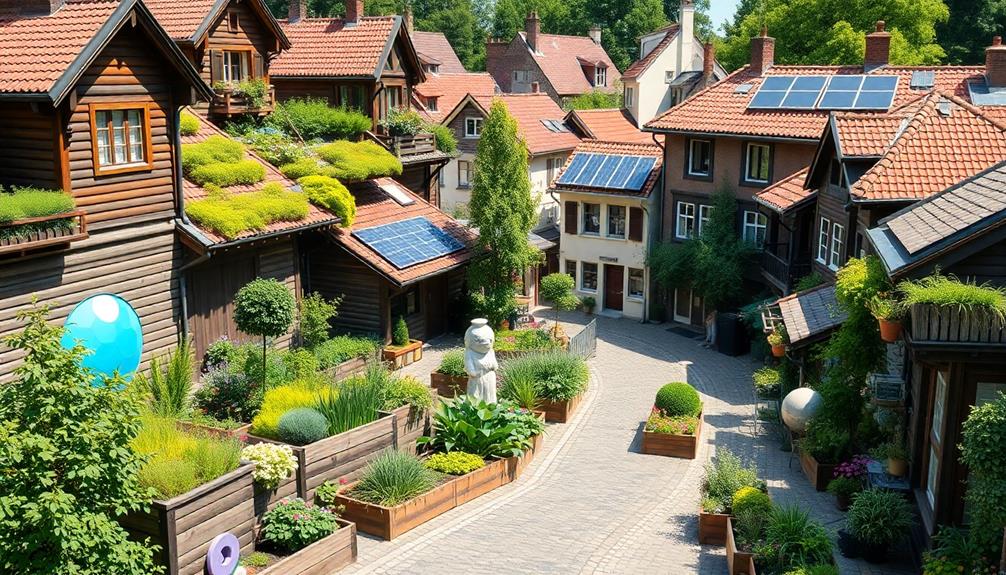
Sustainability in urban design often draws inspiration from traditional practices that prioritize harmony with the environment. You'll find that traditional urbanism embodies sustainable practices that not only enhance the quality of life but also promote ecological balance.
For instance, walkable neighborhoods and mixed-use developments reduce reliance on automobiles, leading to lower carbon emissions and fostering community engagement. Incorporating elements like Indonesian decorative pillows can add cultural richness and vibrancy to urban living spaces, further enhancing the sense of community.
Using locally sourced materials in construction minimizes embodied energy, directly contributing to a reduced carbon footprint. Compact city designs, a hallmark of traditional urban planning, guarantee resource efficiency by making public spaces and amenities easily accessible. This layout encourages social interactions, helping build a stronger sense of community.
Moreover, traditional designs emphasize the integration of green spaces, improving urban biodiversity and enhancing air quality while mitigating heat. The resilience of these designs, adaptable to local resources and climate conditions, offers a sustainable model for modern urban planning.
Integrating Nature in Urban Design
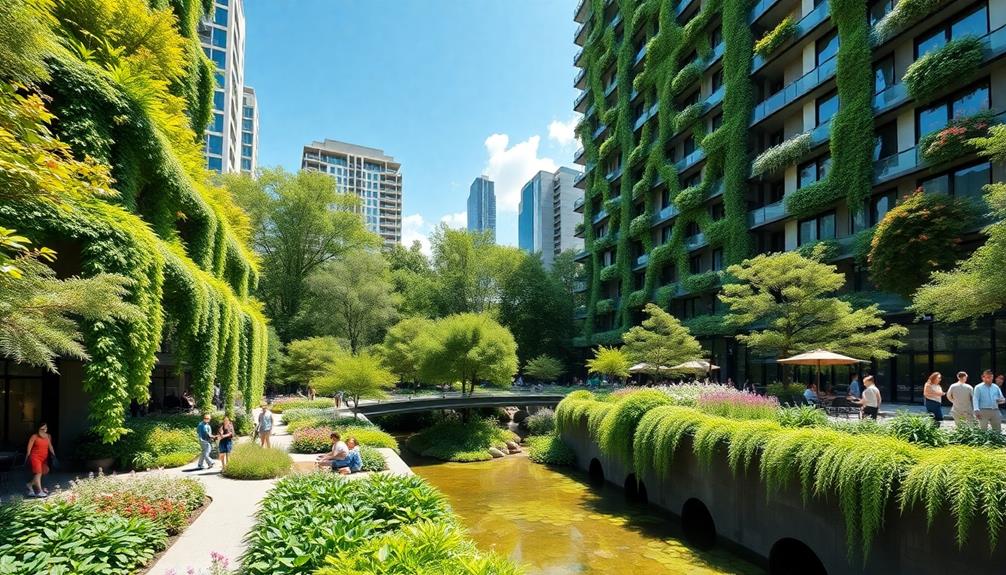
Incorporating nature into urban design not only beautifies spaces but also enhances the well-being of residents. By integrating natural elements, such as traditional Indonesian style home decor, you create environments that foster community interaction and sustainability.
Here are three compelling reasons to embrace this approach:
- Health Benefits: Access to green spaces is linked to improved mental and physical health.
- Social Cohesion: Nature encourages gatherings, making it easier for neighbors to connect.
- Resilience: Incorporating natural elements helps cities adapt to climate change challenges.
Traditional city designs often emphasize the value of green spaces, reflecting a deep understanding of how nature nurtures communities.
Many traditional settlements utilized local materials and methods that harmonized with natural ecosystems, offering valuable lessons for modern urban planning.
Community engagement plays an essential role in this process. By collaborating with local organizations and incorporating storytelling, you can effectively integrate nature into contemporary urban settings.
Resilient neighborhoods, characterized by walkability and accessible amenities, serve as inspiration for future designs.
Ultimately, blending these traditional practices with modern concepts can lead to more sustainable, vibrant urban environments that prioritize both nature and community.
Frequently Asked Questions
How Do Traditions Influence Modern Urban Planning Methodologies?
Traditions influence modern urban planning methodologies by guiding community values and preferences. You'll find that planners often integrate historical elements, ensuring cultural continuity while balancing innovation, which helps create spaces that resonate with local identity.
Can Tradition Conflict With Contemporary Urban Design Trends?
Tradition can definitely conflict with contemporary urban design trends. You might find that historical preservation efforts clash with modern aesthetics, creating tension between maintaining cultural identity and embracing innovative, forward-thinking approaches to urban development.
What Role Do Local Communities Play in Preserving Traditions?
Local communities play an essential role in preserving traditions. They actively engage in cultural practices, share stories, and promote local heritage, ensuring traditions thrive amidst change. By participating, you help maintain a unique identity and sense of belonging.
How Can Urban Designers Balance Tradition With Innovation?
Did you know 70% of people value local heritage in city planning? You can balance tradition with innovation by engaging communities, integrating historical elements, and employing modern technologies that respect past styles while promoting contemporary functionality.
Are There Case Studies Showcasing Successful Integration of Tradition in Urban Design?
Yes, you'll find numerous case studies highlighting successful urban designs that blend tradition with modernity. Cities like Paris and Kyoto showcase how preserving historical elements enhances cultural identity while accommodating contemporary needs and innovations.
Conclusion
So, next time you stroll through your city, don't just admire the shiny new buildings or the trendy cafes. Remember, those ancient traditions are secretly pulling the strings, crafting urban spaces like a master chef whipping up a gourmet dish — with a dash of history and a sprinkle of community spirit. Who knew that all those centuries-old practices could shape your corner coffee shop? Embrace the quirks of tradition; they might just be the architects of your urban adventure!
